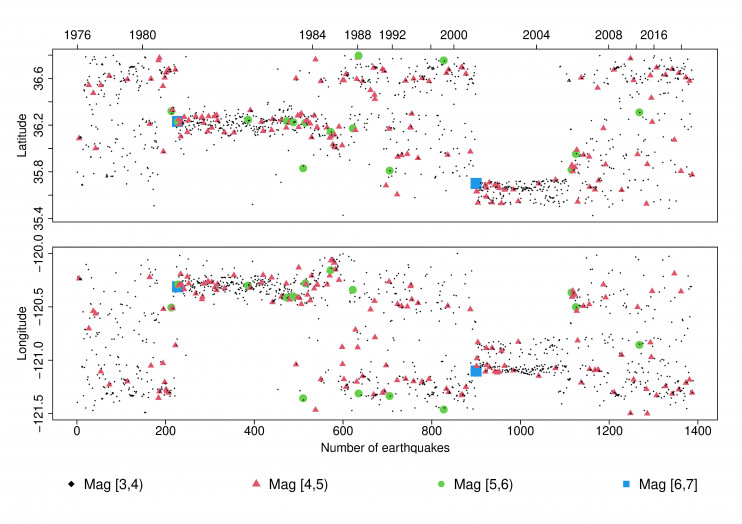One thing leads to another: How mathematical modelling can help us to understand the domino effect

Associate Professor Ting Wang and Professor Boris Baeumer of Te Whare Wānanga o Otāgo the University of Otago will develop mathematical models of the “domino effect” to better understand and forecast outcomes for real-world systems
Published on 2 Whiringa-ā-rangi November 2023
Nature is full of instances where a major destabilising event starts a chain reaction of recurrent cause-and-effect, like an earthquake and resulting aftershocks, or the spread of rumours in a social network. This kind of chain reaction is referred to colloquially as the “domino effect”, in reference to a falling row of dominoes. While events like this are relatively common, their inherent randomness makes it very difficult to forecast their impact, even over short time scales.

A real-world example of the domino effect: recurrence of mainshock-aftershock sequences in Northern California (image supplied)
Associate Professor Wang and Professor Baeumer have been awarded a Marsden Fund Standard grant to develop a new class of models of the domino effect. These models aim to capture random stochastic recurrence patterns and cause and effect processes. Each occurrence in the model will be dependent on the timing and, importantly, the size of previous events, as well as the unobservable overall energy of the system. The models will also exhibit features typical of real world events such as an initial sharp increase with the destabilising event, followed by a slow decrease afterwards, returning to the normal steady state.
After developing their models, Associate Professor Wang, Professor Baeumer and their team will apply them to different systems, including earthquake sequences, social networks and financial data, to test their applicability and effectiveness. This research has the potential to improve the accuracy of predictions across many different sectors, with benefits for health, safety and the economy.
